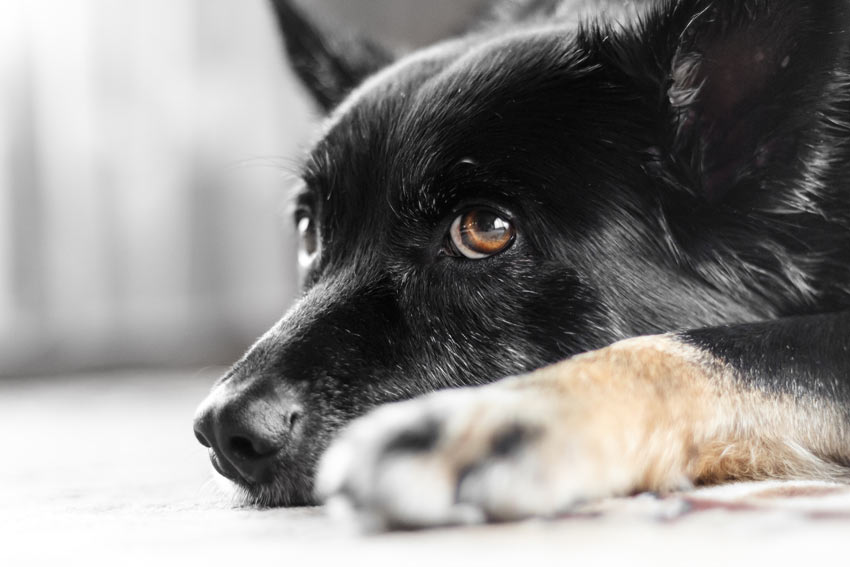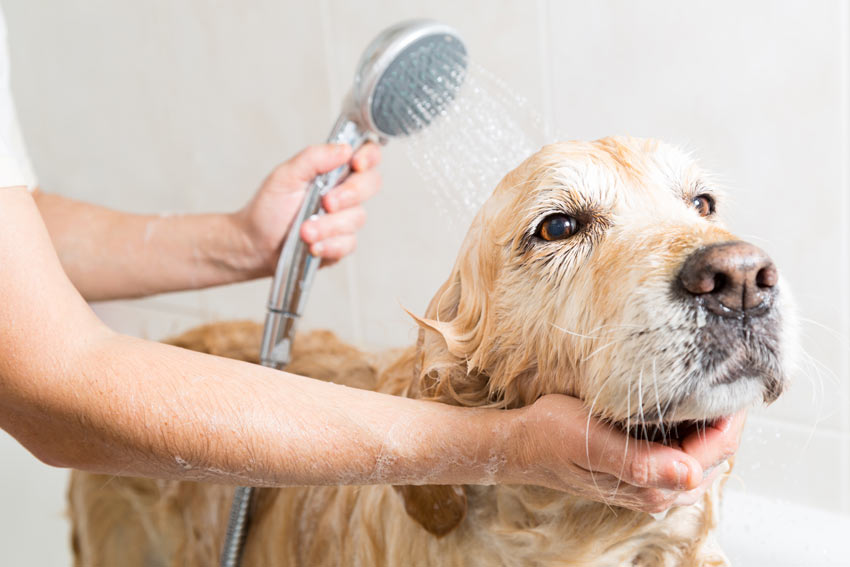Dogs eyes bare the brunt of their inquisitive nature... whether he's plunging into muddy puddles or crawling through brambles, your dog’s eyes are vulnerable to damage.
When checking your dog’s eye first start by looking at the eyes from a distance. They should be clear, bright and fully open. The easiest way to inspect your dog’s eyes closely is to hold up a treat for them to look at. Like us, dogs will often have ‘sleep’ in the corner of their eyes. However, if you notice any discharge or signs of infection then get in contact with your vet.

A close up of a Stafordshire Bull Terriers healthy eyes
You can then check for:
- Redness on the whites
- Scratches
- Anything in the eye
- If the discharge is clear or cloudy
- If the eye is cloudy
Eye infection symptoms include redness, cloudiness, inflammation, unusual discharge, difficulty in seeing or an increase in sensitivity to light. Eye infections can become very serious if they are neglected and can even cause permanent damage to your dog’s vision.
How To Treat an Eye Infection
Eye infection treatment is usually prescribed eye drops, which may need to be administered a couple of times a day. If you suspect that your dog’s eyes might be affected by an allergy like hay fever for example, get in contact with your vets. You can use saline eye drop solutions to wash the eye out.

A close up of a healthy clear eye
Breeding Dogs And Eyes
If you want to breed your dog, it is important that you have it tested once a year for any eye conditions.
Breeds that are most susceptible to eye problems include the Border Collie, the Rough Collie, the Shetland Sheepdog and the Smooth Collie.

A healthy adult Border Collie on an adventure in the woods
Breeds with short snouts or squashed faces (Brachycephalic breeds) are also susceptible to eye problems as their eyes protrude from their face and are not protected by the frame of their face. These breeds include the Cavalier King Charles Spaniel, the Pug, the Boston Terrier, the Chow Chow, the English Bulldog, the Boxer, the Shih Tzu, the Pekingese, the French Bulldog, the Bullmastiff, and the Staffordshire Bull Terrier.

An English Bulldog standing tall and strong
For breeds that can have their vision impaired by excessive hair, such as an Old English Sheepdog, it can be a good idea to very carefully trim the hair around the eyes to allow them to see.

An Old English Sheepdog with a beautifully groomed long coat
How To Clean Your Dog’s Eyes
Sometimes your dog will have some nasty gunk in his eyes, but don’t worry this tends to be doggy ‘sleep’ which isn’t harmful (even if it can be quite unsightly). Cleaning your dog’s eyes is very easy.

A Jack Russell Terrier with beautiful healthy eyes
You can simply use a piece of cotton wool and some lukewarm, sterile water to gently mop it away. However, if you notice any discharge, cloudiness, tearing, tear stained fur, or closed eyes then you should get in contact with your vet. The eyes should be clear, bright and fully open. You must also check the lining of your dog’s eye sockets. If they are healthy they should appear pink, not white or red.
Avoid going anywhere near your dog’s eyes when you are bathing him, and make sure that you trim the hair around your dog’s eyes so that it doesn’t damage them or impair his vision.







Comments
There are no comments just yet